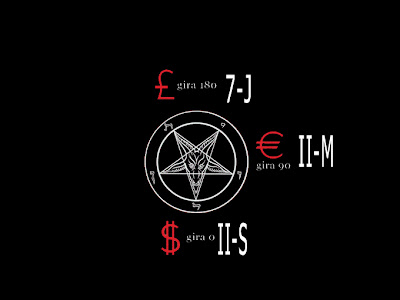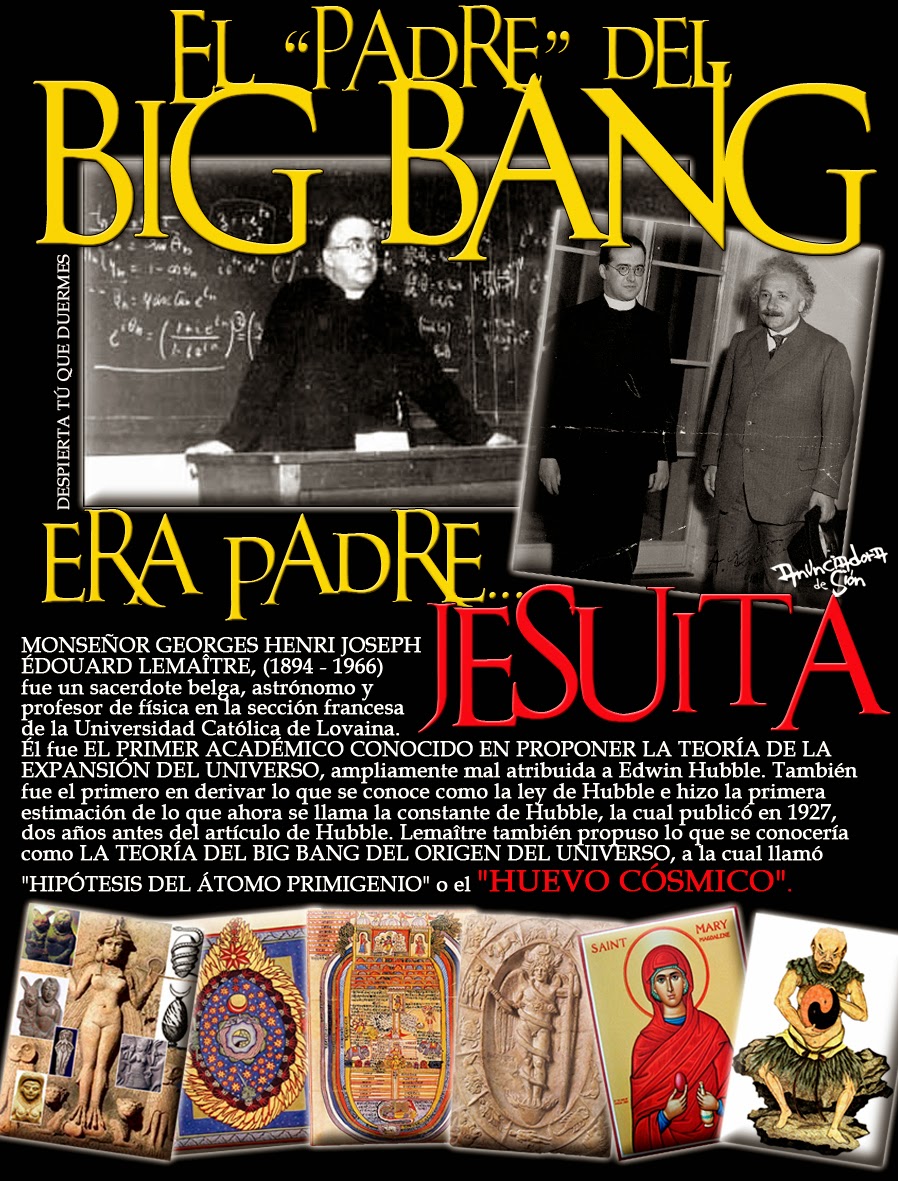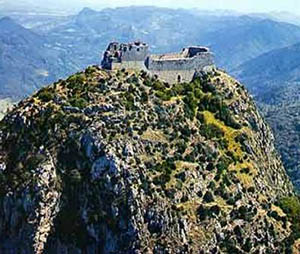|
|
CALENDARIO HEBREO-SHABBAT LUNAR: EL SHABBAT LUNAR CODIFICADO EN LA GRAN PIRAMIDE
Choose another message board |
|
Reply |
Message 1 of 95 on the subject |
|
|
It should be noted that the recovery here of the ancient Egyptian stade has been made possible only very recently by the emergences of the Global Positioning System and Google Earth (see Appendix C). In other words, with data from artificial satellites and radio telemetry. The question of how the builders could position the Horizon Pyramid so very precisely without such aids belongs with that other great mystery – how the Horizon Pyramid was built.
The significance of the 30th Parallel in the scheme of things is that it can be geometrically constructed in cross-section, with compasses and straightedge, via a vesica piscis. The three-dimensional analog of the vesica is formed by the overlapping of two equal spheres such that the centre of one lies on the surface of the other, with the 30th Parallel occurring along the intersection of the surfaces.

Figure 3-19. Vesica Piscis And 30th Parallel
From here on the latitudes of the apex of the Horizon Pyramid, of the radius of exactly 3⅔ Lunar radii and of the most northerly overhead Moon will be treated as identities of the 30th Parallel. Furthermore, Moon and Earth will be treated as reference spheres whose radii are in the ratio 3:11. And π will be evaluated at 22/7, for by doing all of these things a series of remarkable coincidences will be encountered.

Figure 3-20. Earth, Moon And Horizon Pyramid
|
|
|
|
When the disk of the Moon is also enclosed in a square, the first such coincidence is the appearance of Pythagorean {3-4-5} triangles in the geometrical construction resulting from its juxtaposition with the disk of the Earth.

Figure 3-21. Earth, Moon And {3-4-5} Triangles
Extending the construction to form a cross-section of the Grand Pyramid, the lengths of the component lines must be multiplied up, in this case by 12 (the sum of 3, 4 and 5), in order to continue expressing them all as whole numbers. This gives a unit exactly equal to 60 English miles, 60 being the product of 3, 4 and 5. Put another way, if the modulus of the diagram shown in Figure 3-22, equal to 1/132nd of the diameter of the Terrestrial reference sphere, the Grand span, is subdivided by the product of 3, 4 and 5 then the result is a unit of length which is exactly equal to a modern English or U.S. mile.

Figure 3-22. Earth, Moon And Grand Pyramid
In terms of the Grand span derived in Figure 3-22, the combined diameters of the Terrestrial and Lunar reference spheres is 168. That is also the number of hours in each and every week. Just as the Grand span is exactly divisible into 60 English miles, so the hour is divided into 60 minutes and the number of minutes in every seven-day period is exactly 10,080. Seven days is very roughly the period of a single Lunar quarter.

Figure 3-23. The Seven Days of The World
The radius of the large circle whose circumference is equal to the perimeter of the square around the Earth, taking π (pi) to be 22/7, is 5,040 miles. 5,040 is the product of all the numbers from 1 to 7, written 7! and is known as the factorial of seven.
5,040 = 1 × 2 × 3 × 4 × 5 × 6 × 7 = 7!
The modulus of the diagram shown in Figure 3-21 is 720 miles. 720 is the factorial of six.
720 = 1 × 2 × 3 × 4 × 5 × 6 = 6!
The circumference of the large circle, again taking π = 22/7, is exactly 528 Grand spans, or 31,680 miles, and this is of course equal in length to the perimeter of the square around the Earth, the base of the virtual cosmic Horizon Pyramid whose height is equal to the combined radii of Earth and Moon, or 5,040 miles.

Figure 3-24. Abhisambodhi Vairocana Mandala (Tibet, 14th Century)
|
|
|
|
|
|
Reply |
Message 81 of 95 on the subject |
|
|
|
|
Reply |
Message 82 of 95 on the subject |
|
| Reply |
Message 64 of 64 on the subject |
|
| Reply |
Message 28 of 33 on the subject |
|
|
|
|
| Reply |
Message 29 of 33 on the subject |
|
|
|
|
| Reply |
Message 30 of 33 on the subject |
|
|
|
|
| Reply |
Message 31 of 33 on the subject |
|
|
|
|
| Reply |
Message 32 of 33 on the subject |
|
|
|
|
NOTEN LA IMPRESIONANTE RELACION DE LA GRAN PIRAMIDE CON EL OCTOGONO DEL VATICANO EN EL MARCO A LA RELACION DE LA SUPERFICIE EN EL CONTEXTO A UN CUADRADO DE LADO 2.
SUPERFICIE CUADRADO=2*2=8 (AQUI ESTA LA CLAVE MATEMATICA DEL "EXPERIMENTO FILADELFIA")
|
|
|
|
|
|
|
Reply |
Message 83 of 95 on the subject |
|
LA LETRA S (SABIDURIA/SABADO/DRACO/$) EN EL ALFABETO INGLES ES LA LETRA NUMERO 19-IMPRESIONANTE CLAVE MASONICA CON REFERENCIA AL SABADO SEGUN LAS FASES DE LA LUNA
|
|
|
|
Reply |
Message 84 of 95 on the subject |
|
LA LETRA S (SABIDURIA/SABADO/DRACO/$) EN EL ALFABETO INGLES ES LA LETRA NUMERO 19-IMPRESIONANTE CLAVE MASONICA CON REFERENCIA AL SABADO SEGUN LAS FASES DE LA LUNA
EL 9 DE JULIO, DIA DE LA INDEPENDENCIA ARGENTINA, ES EL DIA NUMERO 190 DEL CALENDARIO GREGORIANO, EN LOS AÑOS NO BISIESTOS. 2016, AÑO DEL BICENTENARIO DE LA INDEPENDENCIA ARGENTINA. LO CURIOSO ES QUE EL 15 DE AGOSTO, EN LOS AÑOS BISIESTOS, ES EL DIA NUMERO 228=19X12 Y EN LOS AÑOS NO BISIESTO, EL DIA NUMERO 227 DEL CALENDARIO GREGORIANO.
CABE ACLARAR QUE EL DIA DE LA ASUNCION DE LA VIRGEN, INSISTO, ESTA EN LA SEMANA 33 DEL CALENDARIO.
231=7X33
|
|
|
|
Reply |
Message 85 of 95 on the subject |
|
|
|
|
|
La razon de la circunferencia y el diametro es obvio que es el numero PI.
|
|
|
|
|
|
22/7=DIA DE MARIA LA MAGDALENA=3.14 =PI
|
|
|
| Reply |
Message 61 of 63 on the subject |
|
|
|
|
| Reply |
Message 62 of 63 on the subject |
|
|
|
|
| Reply |
Message 63 of 63 on the subject |
|
|
|
|

SABIDURIA=SABADO=LETRA S=$
|
|
|
|
|
|
y la Omega, principio y fin, dice el Señor, el que es y que era y que ha de venir, el Todopoderoso.
16. Apocalipsis 1:11 que decía: Yo soy el ALFA y la Omega, el primero y el último. Escribe en un libro lo que ves, y envíalo a las siete iglesias que están en Asia: a Efeso, Esmirna, Pérgamo, Tiatira, Sardis, Filadelfia y Laodicea.
17. Apocalipsis 2:27 y las regirá con vara de hierro, y serán quebradas como vaso de ALFArero; como yo también la he recibido de mi Padre;
18. Apocalipsis 21:6 Y me dijo: Hecho está. Yo soy el ALFA y la Omega, el principio y el fin. Al que tuviere sed, yo le daré gratuitamente de la fuente del agua de la vida.
19. Apocalipsis 22:13 Yo soy el ALFA y la Omega, el principio y el fin, el primero y el último.
|
|
|
|
|
|
|
|
|
|
Reply |
Message 86 of 95 on the subject |
|
|
|
|
La razon de la circunferencia y el diametro es obvio que es el numero PI.
22/7=DIA DE MARIA LA MAGDALENA=3.14 =PI

SABIDURIA=SABADO=LETRA S=$
EN EL CIRCULO SE CONFUNDEN EL PRINCIPIO Y EL FIN- HERACLITO
y la Omega, principio y fin, dice el Señor, el que es y que era y que ha de venir, el Todopoderoso.
16. Apocalipsis 1:11 que decía: Yo soy el ALFA y la Omega, el primero y el último. Escribe en un libro lo que ves, y envíalo a las siete iglesias que están en Asia: a Efeso, Esmirna, Pérgamo, Tiatira, Sardis, Filadelfia y Laodicea.
17. Apocalipsis 2:27 y las regirá con vara de hierro, y serán quebradas como vaso de ALFArero; como yo también la he recibido de mi Padre;
18. Apocalipsis 21:6 Y me dijo: Hecho está. Yo soy el ALFA y la Omega, el principio y el fin. Al que tuviere sed, yo le daré gratuitamente de la fuente del agua de la vida.
19. Apocalipsis 22:13 Yo soy el ALFA y la Omega, el principio y el fin, el primero y el último.
|
|
|
|
|
|
Reply |
Message 87 of 95 on the subject |
|
DIAMETRO DE LA TIERRA (MILLAS INGLESAS) =7920=720*11
DIAMETRO DE LA LUNA (MILLAS INGLESAS) =2160=720* 3
RADIO TIERRA MAS RADIO LUNA (MILLAS INGLESAS) =5040=720* 7
7920/5040=11/7 (11 DE SEPTIEMBRE/SEPTIMO/7)
5040*2*22/7=3168*10 (3168=GEMATRIA DE NUESTRO SEÑOR JESUCRISTO)
5040/(7920/2=RADIO DE LA TIERRA)=5040/3960=1.618 (NUMERO DE ORO)
SECRETO 9/11 (TAMBIEN 7/11) ESTA 100% CONECTADO A LA GRAN PIRAMIDE Y LA NUEVA JERUSALEM (MISMO PATRON). La pregunta es del porque de la referencia a la LUNA EN EL MARCO A LA TIERRA. Sabemos que el SOL ES JACOB y que la LUNA ES RAQUEL segun el sueño de Jose de GENESIS 37.
¿Pero la luna en el marco a RAQUEL NO SIMBOLIZA AL HIJO DE RAQUEL? Sabemos que en el sistema solar LA TIERRA ES LA QUE GIRA ALREDEDOR DEL SOL Y LA LUNA GIRA ALREDEDOR DE LA TIERRA.
La simbologia esoterica es como que nos da a ENTENDER QUE LA GRAN PIRAMIDE SIMBOLIZA A LA MADRE Y LA PIEDRA ANGULAR AL HIJO DE LA MISMA. Otro dato asombroso es la interrelacion del PATRON DE LA TIERRA/LUNA/ALQUIMIA CON la misma semana de 7 dias en funcion a la luna y que incluso la cantidad de minutos que contiene la misma equivale matematicamente al RADIO DE LA TIERRA MAS EL RADIO DE LA LUNA.
MENSAJE ESOTERICO-ESPIRITUAL DETRAS DEL 911

Compare estas graficas con el movimiento de la luna.
El movimiento de la Luna es de oeste a este alrededor de la Tierra, en el mismo sentido de rotación del planeta. Veamos cuáles son las fases de la Luna:
 |
- Luna Nueva: en esta fase no vemos ninguna parte iluminada de ella y se da cuando la Luna pasa entre el Sol y la Tierra, siempre siguiendo su órbita alrededor de la Tierra.
- Cuarto Creciente: es cuando la Luna ha completado un cuarto de su órbita alrededor de nuestro planeta y alcanza una posición de 90¼ al este del Sol.
- Luna Llena: una semana después de cuarto creciente, el disco de la Luna se ve completamente iluminado; es decir, con su cara visible frente al Sol.
- Cuarto Menguante: es cuando, una semana después de la fase anterior, solo se ve la mitad del disco de la Luna.
|
Lo que ocurre es que el calendario actual judio, el calendario de Hillel II, considera la luna nueva en luna creciente que como es sabido la misma nace en occidente a contrario de la la verdadera luna nueva que es en luna llena que nace en oriente. Por eso la Biblia habla de "espaldas" porque por razones obvias los judios actualmente en la luna nueva al considerarla en occidente, repito en luna creciente, estan a espaldas de la verdadera luna nueva en luna llena que nace en oriente.
Las cosas nunca suceden sin una mano que las mueva, y en este caso la mano es evidente. Las monedas de los países que fueron agredidos son la clave para la solución de este enigma. Al girarlas toman su ubicación en el pentagrama y anuncian además las fechas de los atentados, pero es solo el comienzo. Todas las investigaciones anteriores han llegado hasta aquí, esta sin embargo comienza en este punto.
 Aquí los signos monetarios toman su lugar en el pentagrama a 0, 90 y 180 grados. Al ser girados las fechas de los crímenes aparecen claramente. Aquí los signos monetarios toman su lugar en el pentagrama a 0, 90 y 180 grados. Al ser girados las fechas de los crímenes aparecen claramente.

Evidentemente hay una fuerte referencia SABATICA EN FUNCION A LA LUNA, EN UN MARCO ALQUIMICO CON EL 911. LA TORA ES EGIPTOLOGIA PURA.
|
|
|
|
Reply |
Message 88 of 95 on the subject |
|
. Juan 16:21 La mujer cuando da a luz, tiene dolor, porque ha llegado su HORA; pero después que ha dado a luz un niño, ya no se acuerda de la angustia, por el gozo de que haya nacido un hombre en el mundo.
|
|
|
|
Reply |
Message 89 of 95 on the subject |
|
|
COLOSENSES 2:16=216=6*6*6=666 =SISTEMA SEXAGECIMAL=1 DE REYES 10:14= APOCALIPSIS 13:18
2160 MILLAS INGLESAS=DIAMETRO DE LA LUNA
DIAMETRO DE LA TIERRA (MILLAS INGLESAS) =7920=720*11
DIAMETRO DE LA LUNA (MILLAS INGLESAS) =2160=720* 3
RADIO TIERRA MAS RADIO LUNA (MILLAS INGLESAS) =5040=720* 7
7920/5040=11/7 (11 DE SEPTIEMBRE/SEPTIMO/7)
5040*2*22/7=3168*10 (3168=GEMATRIA DE NUESTRO SEÑOR JESUCRISTO)
5040/(7920/2=RADIO DE LA TIERRA)=5040/3960=1.618 (NUMERO DE ORO)
21/6=MANO DE DIOS DE MARADONA
|
|
|
FILOSOFIA=FILADELFIA
DELFIA=SOFIA (SERPIENTE PITON)
$=SERPIENTE
MONEY / MOON / LUNA
GOD IS GOLD
|
|
|


OBVIO NEXO DE LA SERPIENTE CON LA LUNA , OSEA EL SABADO LUNAR |
|
|
|
Reply |
Message 90 of 95 on the subject |
|
 


11 DE SEPTIEMBRE O SEPTIEMBRE 11
11/9 O 9/11
Sapientia Aedificavit Sibi Domum. Es decir, "la sabiduría ha edificado aquí su casa". Resulta curioso que la misma frase aparece en el Evangelio de María Magdalena, un texto apócrifo. Se dice que en el interior de esta iglesia y de otras muchas de Venecia está escondido el tesoro de los templarios. Pero no hay ninguna prueba de ello. Para terminar ya con esta entrada me gustaría que nos acercásemos un momento a uno de los edificios más emblemáticos de Venecia: el Palacio Ducal.

La Maddalena

La Maddalena

Tomb of Tommaso Temanza

ISLA SAN GIORGIO (VENECIA)=GEORGE LEMAITRE
GEMATRIA EN INGLES DE SEED=33
GEMATRIA EN INGLES DE GATE=33
SARA (CE-SAREA DE FILIPO)=PARALELO 33
"¡Oh profundidad de las riquezas de la sabiduría (sophia)
y de la ciencia (gnwsiV, gnosis) de Dios!
¡Cuán incomprensibles son sus juicios, e inescrutables sus caminos!"
(Romanos, 11: 33).
25 DE ABRIL=DIA DE SAN MARCOS
22 DE JULIO=DIA DE MARIA LA MAGDALENA
 the Apple
| milky way in Simple Gematria Equals: 119 |
( |
m 13 |
i9 |
l 12 |
k 11 |
y 25 |
0 |
w 23 |
a1 |
y 25 |
) |
| queen mary in Simple Gematria Equals: 119 |
( |
q 17 |
u 21 |
e5 |
e5 |
n 14 |
0 |
m 13 |
a1 |
r 18 |
y 25 |
|
| hebrew calendar in Simple Gematria Equals: 119 |
( |
h8 |
e5 |
b2 |
r 18 |
e5 |
w 23 |
0 |
c3 |
a1 |
l 12 |
e5 |
n 14 |
d4 |
a1 |
r 18 |
| mary magdalene in Simple Gematria Equals: 119 |
( |
m 13 |
a1 |
r 18 |
y 25 |
0 |
m 13 |
a1 |
g7 |
d4 |
a1 |
l 12 |
e5 |
n 14 |
e5 |
|

|
|
|
|
Reply |
Message 91 of 95 on the subject |
|
Location
Montségur is in the Ariege, in the foothills of the Pyrenees, not far from Lavelanet, due South from Mirepoix.
Montségur lies at 42°52'35" N, 1°49'51" E on a pog (a volcanic pluton) at an altitude of 1,207 meters. The castle is owned by the Commune of Montségur. There is an entrance fee, which also covers entry to a museum in the nearby town.
Guided Tours
Cathar Castle Tours
Mairie: mairie.montsegur@wanadoo.fr
Tel: 05 61 0110 27
Tourist Information Office:
Tel: 05 61 03 03 03

|
|
aerial view of Montségur
|
 |
|
MARIA MAGDALENA EN EL CATARISMO (CATAROS)
25 DE ABRIL=DIA DE SAN MARCOS
22 DE JULIO=DIA DE MARIA LA MAGDALENA
|
|
|
|
Reply |
Message 92 of 95 on the subject |
|
|
|
|
Reply |
Message 93 of 95 on the subject |
|
|
|
|
Reply |
Message 94 of 95 on the subject |
|
|
|
|
Reply |
Message 95 of 95 on the subject |
|
|
|
 First First
 Previous
81 a 95 de 95
Next Previous
81 a 95 de 95
Next
 Last
Last

|
|
| |
|
|
©2025 - Gabitos - All rights reserved | |
|
|

